Early table potato variety “Palace” from Belarusian breeders
Palats is a productive potato variety that can be grown in any climate zone. For tubers to ripen, 40-50 days are enough. These potatoes are unpretentious and have strong immunity to many pests and diseases. We will tell you in detail about the characteristics of the variety and the nuances of its cultivation in the article.
Description of the variety
The palace is unpretentious to weather conditions and has high productivity. It contains a small amount of starch - 14%. They often grow it for their own consumption.
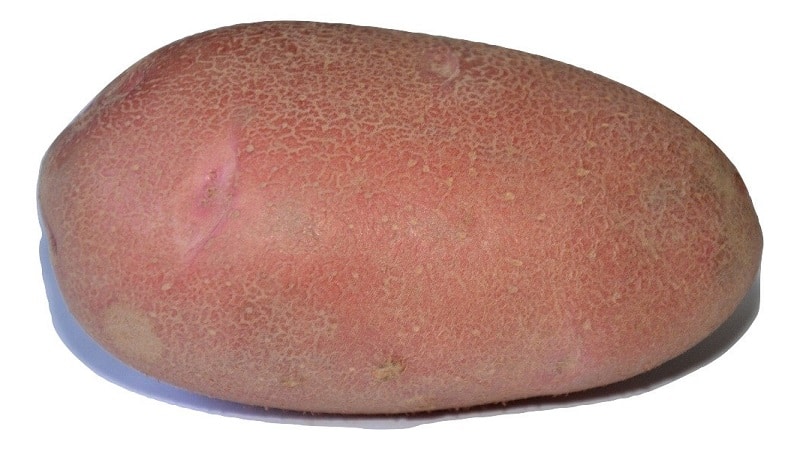
Origin and development
This variety was bred in the Republic of Belarus in 2017. It participates in variety trials and, due to its adaptability to different types of soil and climate, is quickly spreading among gardeners.
Distinctive features, appearance
Tubers contain pectin, fiber, natural sugar, minerals and vitamins. It also contains trace elements that are necessary for the human body (potassium, calcium, magnesium, chlorine, phosphorus, iron, sodium).
The tuber, namely its peel, contains beta-carotene and organic acids. The most important value of the variety is considered to be the content of food coloring anthocyanin in the fruits, which has anti-inflammatory and anti-cancer effects.
Oval-shaped tubers are large and medium, weighing up to 150 g. The surface of the potato is smooth, the skin is red, the flesh inside is yellow. It has wonderful taste.The flesh inside is dense; when cut when boiled, the potatoes do not fall apart. Suitable for frying, making soups and salads.
Plant and Harvest Characteristics
Compact bushes with large dark green leaves, straight stems. The flowers are red-violet and contain large amounts of the plant poison solanine.
High yield is the key advantage of the variety. Each plant produces an average of 8-10 tubers weighing up to 150 g each (average weight - 70-90 g). Up to 400 kg are collected per hundred square meters, and up to 600 centners per hectare. The marketability of the crop is also high - 92-94%.
Other potato varieties from Belarus:
Mid-early potato variety "Breeze"
How to grow this variety
Before boarding It is customary to germinate seed potatoes to speed up the emergence of seedlings. For this, two types of germination are used: dry and wet. If dry, it is necessary to spread the potatoes in one layer and keep them in the light for up to 40 days. Wet germination helps to achieve the desired results faster, in just 2-3 weeks. Wet sawdust or moss is placed in the box and potatoes are laid on top in one layer. This way you can make 2-3 layers.
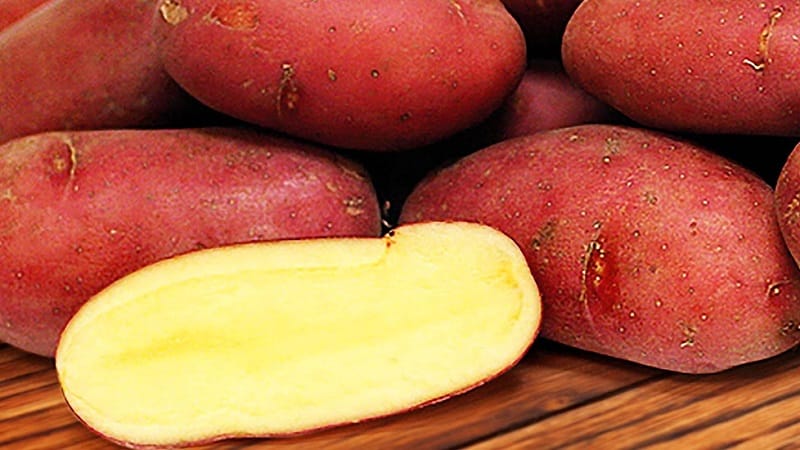
Dates, scheme and rules of planting
The time for planting the Palace variety is chosen depending on the climate.. For example, in the southern regions of Russia you can start planting at the end of March, while in the Central District the favorable time begins at the beginning of May. In the northern regions, the earth warms up later, so it is recommended to plant potatoes here only at the end of May.
There are several methods for planting potatoes, but the most popular is the “under the shovel” method.. It saves space and maintains soil moisture.In the spring, the selected plot of land is dug up and loosened with a cultivator or pitchfork. The planting holes are not made too deep - 6-8 cm is enough for small potatoes and 10-15 cm for large ones.
It is recommended to pour a handful of humus into the hole, and then put in the seed tuber. Palace potatoes are planted in rows, the distance between which should be 75 cm. 30-35 cm are left between the holes.
Care
To obtain a rich harvest and the formation of marketable tubers, proper care is required during the period of potato growth.
Hilling
To better aerate the roots and get rid of weeds, farmers hill up the potatoes twice. The first hilling is carried out three weeks after planting, when the leaves of the seedlings are located 7-8 cm above the soil level.
The second hilling is carried out two weeks after the first. At this point, the height of the stem should be at least 12 cm. The procedure is carried out after watering or rain, raking the soil towards the tubers.
Watering
Soil moisture must be moderate for tubers to grow, otherwise the plant is attacked by fungal diseases and pests and the yield decreases. Water only after the first shoots appear, about a month after planting. Potatoes are watered at the root with settled water at the rate of 3-4 liters per plant.
Before the first buds appear, the frequency of watering should not exceed once a week. In very hot weather, additional moisture may be necessary. You can check this by lowering your palm into the soil. If there is no moisture at a depth of 10 cm, watering is needed.
During the flowering period, the plant is watered twice a week. in the morning or evening using the sprinkling method, spending 12-15 liters of water on the bush. Then mulch with sawdust or hay to protect the soil from drying out.
With the appearance of the first signs of wilting of the tops, watering is reduced.. During this period, the plant requires 3 liters of water every 10-12 days. Watering is stopped 10-14 days before harvest.
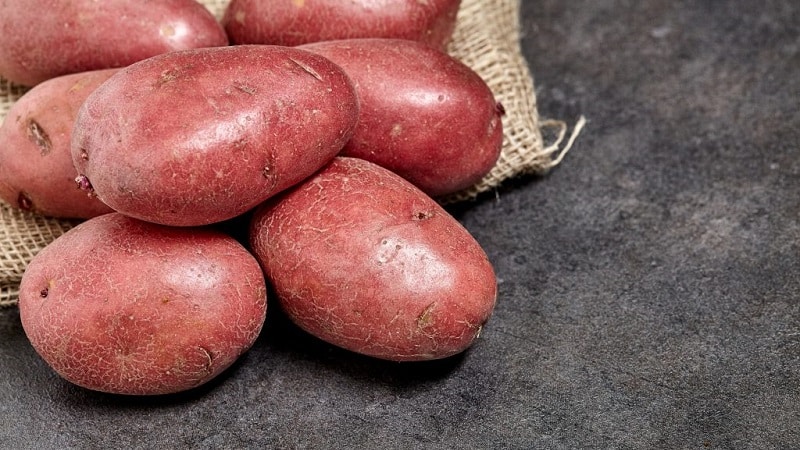
Weeding
In addition to removing weeds, weeding softens the soil. The first time the potatoes are weeded three weeks after planting, the second time when the height of the bushes reaches 40 cm.
Top dressing
Wood ash or slurry is often used as fertilizer.. Nitrogen promotes the development of the leafy part of the stem, and minerals promote a quick harvest. Double superphosphate, urea, potassium, and nitrate can be used as mineral fertilizers.
To obtain maximum yield, it is recommended to apply organic fertilizers together with mineral fertilizers during planting. Fertilizing during the germination period is carried out if the young shoots are weak and thin. Experienced gardeners use urea (carbamide) for this at a rate of 2 tsp. per 1 sq. m and 3-4 glasses of liquid humus.
The second time the fertilizer is applied after 15-20 days: potassium sulfate (2 tsp) and wood ash (5 tbsp) per 1 sq. m directly under the root.
Diseases and pests
Palace is resistant to potato blight and rhizoctonia, but is highly susceptible late blight. This disease affects stems and roots and, if left untreated, can destroy large numbers of tubers. The following methods are used to combat the disease:
- compliance with crop rotation;
- loosening the soil and reducing watering when a disease is detected;
- fertilization with minerals;
- treatment of seed tubers with a growth stimulator;
- use of chemical fertilizers “Quadris”, “Maxim”, “Celest TOP”.
The main potato pest is Colorado beetle. It is difficult to control due to its rapid adaptability to insecticides. The beetle's body contains toxic substances, so birds and animals do not touch it.
The use of chemicals makes potato farming easier, but they have to be changed frequently. Can be used to spray leaves:
- 5% emulsion concentrate "Foxim";
- 20% emulsion concentrate “Sumicidin”.
Their apply twice a season in the morning and evening. The last spraying should be carried out no later than 20 days before harvesting. Summer residents collect beetles and larvae as they appear, but this method is only suitable for small gardens.
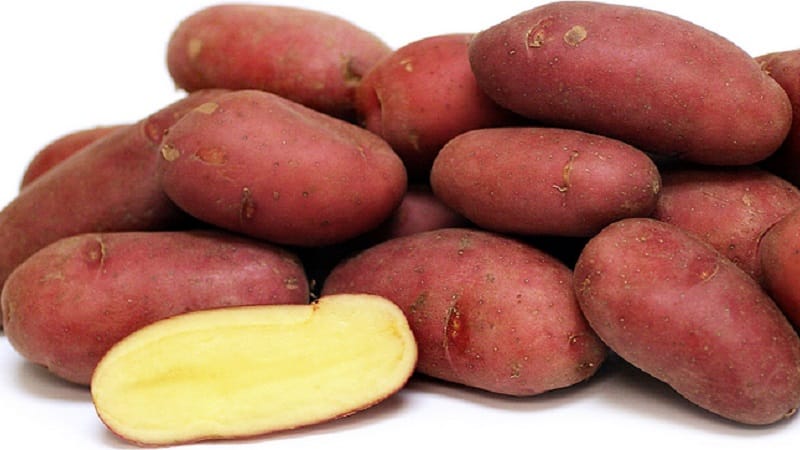
Collection, storage and use of crops
Dig up Palats potatoes in August-September. 7 days before harvesting, the tops are mowed. This helps stimulate the transfer of nutrients to the tubers. Potatoes are dug up in warm, dry weather and kept in a shaded, ventilated place for 14-15 days before final harvesting. Thus, the areas injured by the shovel are healed, and the crop ripens.
Seed material is immediately selected from the new harvest. For planting, select only good tubers, preferably small ones, discarding damaged ones. They are then placed under a canopy or tree canopy and kept in moderate light for about three weeks to green up. At the same time, solanine is produced, a toxic substance that makes the tubers unsuitable for pests and helps to increase germination.
Important! Potatoes intended for eating should not be left in the light. It turns green and becomes poisonous due to solanine.
After two weeks, food potatoes are stored in a dark, cool place.. Seed tubers are kept in the light until the greening process is completed - 3-3.5 weeks.
Advantages and disadvantages of the variety
Variety The palace is quickly spreading among gardeners due to rapid ripening and high yield. The tubers are large and oval in shape, making them easy to clean. When cut, boiled potatoes of this variety do not fall apart, so they are ideal for salads.
Advantages:
- ability to grow in almost any conditions;
- early maturation;
- high yield - up to 650 c/ha.
- if the conditions are met, the crop is stored for a long time and does not lose its appearance or taste;
- correct shape of tubers;
- presence of immunity to a number of diseases.
Despite all the advantages, The palace also has its disadvantages:
- high tendency to become infected with late blight;
- poor cooking ability.
Growing regions
Preferred regions are not specified for Palats potatoes because the plant easily adapts to any climatic conditions. For the variety to ripen, 2-2.5 warm months are enough. Therefore, Palace is suitable for cultivation in both southern and northern regions.
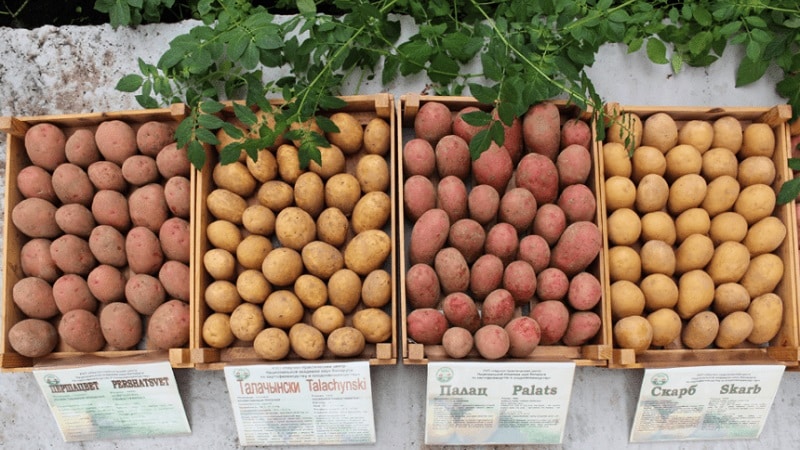
Reviews
Reviews from those who have already become acquainted with the variety are mostly positive.
Ekaterina, Bryansk: “I planted Palace for the first time in 2018, when I saw the photo. I got a big harvest. I dug up the first tubers for testing in July. Potatoes are tasty, but do not cook well; they are best suited for making salads. Otherwise, it is no different from other varieties.".
Albert, Krasnovishersk: “The weather in our area is unstable, so for planting we have to use vegetables that can adapt to such a climate. Potatoes of the Palats variety are just like that. However, late blight appeared during cultivation.The disease was eliminated, but the harvest was less than expected. Potatoes taste wonderful, so we decided to plant them for early harvesting and eating in the summer and autumn.”.
Oksana, Penza: “The Palace potato is not yet so popular in our region, so I planted it in a small area. But imagine my surprise when the harvest was higher than the others. In addition, it withstood diseases that affected other varieties. When boiled, potatoes keep their shape, and Palats has an excellent taste, so I decided to plant this variety every year.”.
Conclusion
Potato Palace of Belarusian selection is a universal early-ripening variety that recently appeared on the Russian market. Due to its high yield and adaptability to different climates and soil types, it is gaining popularity in other countries of the world.
Palace is resistant to nematodes and potato blight, but is prone, like most varieties, to late blight. It belongs to culinary type A, so lovers of delicious potato food can safely choose this variety for growing.